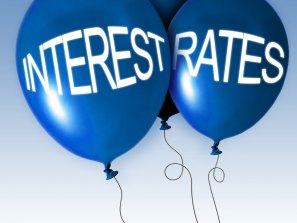Opinion
Your household bills are rising: Here’s how to lessen the burden
By Joel Gibson
Mortgage interest rates are rising, power prices are up 10-20 per cent in a year, while groceries have already jumped about 5 per cent and petrol is up as much as 50 per cent.
With inflation rampant across the economy and consumer anxiety rising, it is tempting to want to fix as many of the prices you now pay as you can. So, how many of our household expenses are “fix-able,” and what are the pros and cons of setting and forgetting?

Fixed-interest mortgage rates have been creeping higher in recent months.Credit:Karl Hilzinger
Mortgages
Fixed mortgage interest rates dipped to less than 2 per cent during the pandemic, but those days are mostly behind us.
You can still fix your mortgage for a one-year term at rates as low as 1.84 per cent (Unity Bank), according to Ratecity, and for two years at 3.04 per cent (also Unity Bank), while BankWAW has the lowest three-year fix at 3.55 per cent.
Commonwealth Bank is the only major still offering a fixed rate of less than 3 per cent, and the average big-four bank lowest 3-year fixed rate has risen by 2.42 percentage points in a year.
While variable rates can be found as low as 1.79 per cent, they are expected to rise multiple times in line with official interest rate increases this year.
CBA is forecasting a further 1.25 percentage points of increases by February next year, so if it happens, and gets passed onto borrowers – which is usually the case – then you need to factor that into your considerations.
Reserve Bank governor Phillip Lowe has said it is “not unreasonable” to expect the cash rate to climb from its current 0.35 per cent to 2.5 per cent.
However, Lowe added a big qualifier: “How quickly we get there, and if we do get there, will be determined by how events unfold.” This came from the same person who said the central bank would likely not raise official rates until 2024.
So, as always with the fixed versus variable mortgage interest debate, there is a gamble involved.
You can bet on a couple of years of inflation and associated mortgage rate rises and fix your rate now to avoid it, or ride the rollercoaster and hope that the inflationary pressures subside. Or you could have a bet each way: split your home loan between fixed and variable rates.
Energy
It is a little-known fact that some energy plans have rates fixed for one year. According to comparison website wattever.com.au, it is about one in eight plans on the market.
Some of those fixed-rate plans remain cheap. In NSW, for example, Nectr and EnergyAustralia are selling 12-month fixed plans that cost at least 20 per cent less than the government reference price.
Red Energy, Australia’s fourth-largest retailer, has a fixed plan at 14 per cent less than the government price.
In Victoria, Lumo Energy is advertising 12-month fixed rates at 21 per cent less than the state government price, while Tango Energy is 16 per cent less and Energy Australia 12 per cent lower.
Still, these plans are not the cheapest available in the market: They tend to be about $50 more over a year for a typical household than the least expensive plans that can see their price increased by the retailer at will.
However, for some of us, $50 is a small price to pay for not having to worry about energy prices again until July 2023 – and those cheaper plans might go up in price anyhow.
There is almost always a risk: If you had fixed your energy price two years ago, you would have lost money as rates have since dropped by an average 8 per cent. However, this year at least, it looks like the only way from here is up.
Health insurance
You cannot fix health insurance premiums, but health funds still allow you to pre-pay for up to a year (up to 18 months ahead for HCF). This kicks coming premium increases down the road.
Savvy customers pre-pay on the eve of their annual premium increase and lock in the old price for another 12-18 months.
Normally, the ideal day to do so would be March 31 – the day before the scheduled April 1 increase. However, multiple health insurers have this year deferred their premium hikes until September-November because of the COVID-19 pandemic.
So, depending on your fund, the best date to lock in the lower premium is the day before they are scheduled to go up.
- Advice given in this article is general in nature and is not intended to influence readers’ decisions about investing or financial products. They should always seek their own professional advice that takes into account their own personal circumstances before making any financial decisions.
Joel Gibson is the author of KILL BILLS. Catch his money saving segments on Nine Radio, Today and on Twitter @joelgibson.